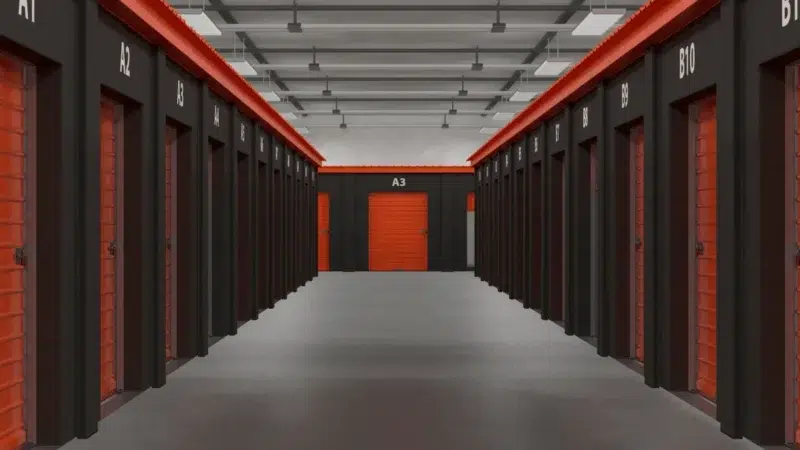If you own a self-storage business, your goal is to keep it constantly full. The more units rented, the more profitable your business will be.
There are several ways to bring a self storage business to potential customers, even in a crowded, competitive environment.
In this article, we will explore five of the marketing essentials for your self storage business.
1. Engage with Customers via the Business Website
A key to bringing customers to your business is the interactive ease with which potential customers can navigate through your website. Your website is similar to entering the door of the self storage business, as this is where potential customers look for pricing, amenities, and information regarding hours and rental periods. To maximize the effectiveness of the website, you’ll want to build the efficiency of the site with seamless links and easy click-through pages.
Use an easy-to-navigate layout with descriptive images of unit sizes and relevant pricing. Add schedules for rentals and place a “Renter Payment” button for ease-of-use by current customers. Also add buttons for “Reserve Now” and “Call Me” that will clearly invite your clients to come through the door to make a reservation for the self storage unit of their choice. To ensure reliable service, contract with a well-known web hosting service and that will guarantee performance.
2. Use Social Media to Your Advantage
Social media influencers can create a “fit” for your business if you choose your spokesperson carefully. Align with someone who offers a perspective on organization or management of household goods; ensure the influencer has a positive reputation and a hint of humor. Use video clips on your website and social media callouts to emphasize the self storage capabilities.
Related: Unlock the Hidden Potential: Marketing Secrets for ‘Boring’ Businesses!
3. Scale Your Self Storage Business with a Plan
Preparing and completing a business plan can make the difference between a partially-rented self storage business and one that is consistently full. To create a self storage business plan, you’ll want to complete each portion necessary and then cohesively compile the total document. Included in the document are the following segments:
- Mission Statement & Objectives
- Research: Target Audience
- Analyze: Competitors
- Financial Forecast
- Funding Options
- Organizational Plan
- Operational Plan
- Marketing Strategies
Not all business plans require every segment; in your self storage business plan, you’ll want to include the following:
Mission Statement & Objectives
This statement should include the “why” behind starting your business. What visionary thought or idea captured your interest? Include with the mission statement your objectives for the business. How many years will it be in business? How will the business scale up? Will you franchise the model? These objectives may change over the years. However, they indicate your projected pathway for the future.
Research: Target Audience
The target audience for your self storage business is a compilation of your customers put into one figurative person. For example, do the majority of your customers live in one region near the self storage business? What are their ages? Do they share common needs, such as a large unit for storing furniture, or do they need smaller units for the storage of documents or smaller items? A demographic picture of your clients will assist when it comes time to market your business to your customers.
Analyze: Competitors
Check out any competitors in your area to determine if their businesses may threaten yours. What are the pricing models? What offers or packages do they extend to customers? What is their primary business unit size? Put together any information you can detail about competitors and examine competitors frequently to stay on top of special offers they’ve extended.

Financial Forecast & Funding Options
Prepare a financial forecast for the startup through to the end of year one. This will give investors or lenders a strong perspective of the potential income and viability of the company for lending purposes.
Operational Plan
Even if you are the sole employee of the business, an operational plan is a good idea for creating an organization. Use this plan to schedule maintenance, clean out unused self storage units, repair broken locks and other hardware, and perform other important functions.
Marketing Strategies
Place within your business plan the marketing strategies you’ve compiled for launch and year one. Even if changes are made, the entry will provide a historical context for successful campaigns and those that need improvement.
4. Distribute Marketing Messages to the Region
With a target market that is made up of regional customers, consider creating special offers for those who live there. Provide a small gift for new customers, place a banner in front of your business offering “buy eleven months; get one free.” Improve customer service to gain referrals and use word-of-mouth to bring new customers to your business. Sponsor local kids sports teams and other community-mind activities. These appearances and the name recognition that goes with them will bring members of the region to your self storage business.
With a combination of your business plan and each of these marketing strategies, your business will scale with an increased rate of self storage rentals. Use relevant campaigns to garner the attention of your customers, depending on the target audience and competitor research, employ the marketing strategies that fit, and enjoy the additional profit that comes from your efforts.
We wish you the best possible success!





